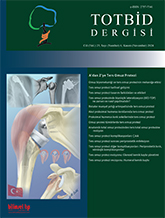
Massive, irreparable tears of the rotator cuff, and the associated degenerative arthritis of the glenohumeral joint, can lead to a painful and pseudoparalyzed shoulder. In such cases, the functional outcome of a non-restricted anatomical shoulder prosthesis is limited and may even be contraindicated. Reverse shoulder arthroplasty (RSA) is widely used for relieving pain and improving shoulder joint functions in cases of severe shoulder joint cartilage damage and rotator cuff tears. Reverse shoulder arthroplasty was first designed in 1985 by the French surgeon Paul Grammont. The Grammont reverse prosthesis creates a new biomechanical environment through the action of the deltoid muscle, compensating for the insufficient rotator cuff muscles. This design has laid the foundation for current RSA principles and has undergone various modifications over the years to reach its modern form. For successful outcomes in RSA, it is as crucial to apply the correct surgical technique as it is to understand the biomechanics and rationale of the used design, and to choose the most suitable design for the specific needs of patients by evaluating the advantages and disadvantages of various RSA designs. This review will examine the biomechanical effects, clinical outcomes, and complication rates of different RSA designs; discuss the roles of factors such as the diameter and shape of the glenosphere, the angle and placement of the humeral component, the base plate, and fixation methods on clinical outcomes, and the impact of different RSA designs on the deltoid muscle, mobility, stability, and postoperative results.